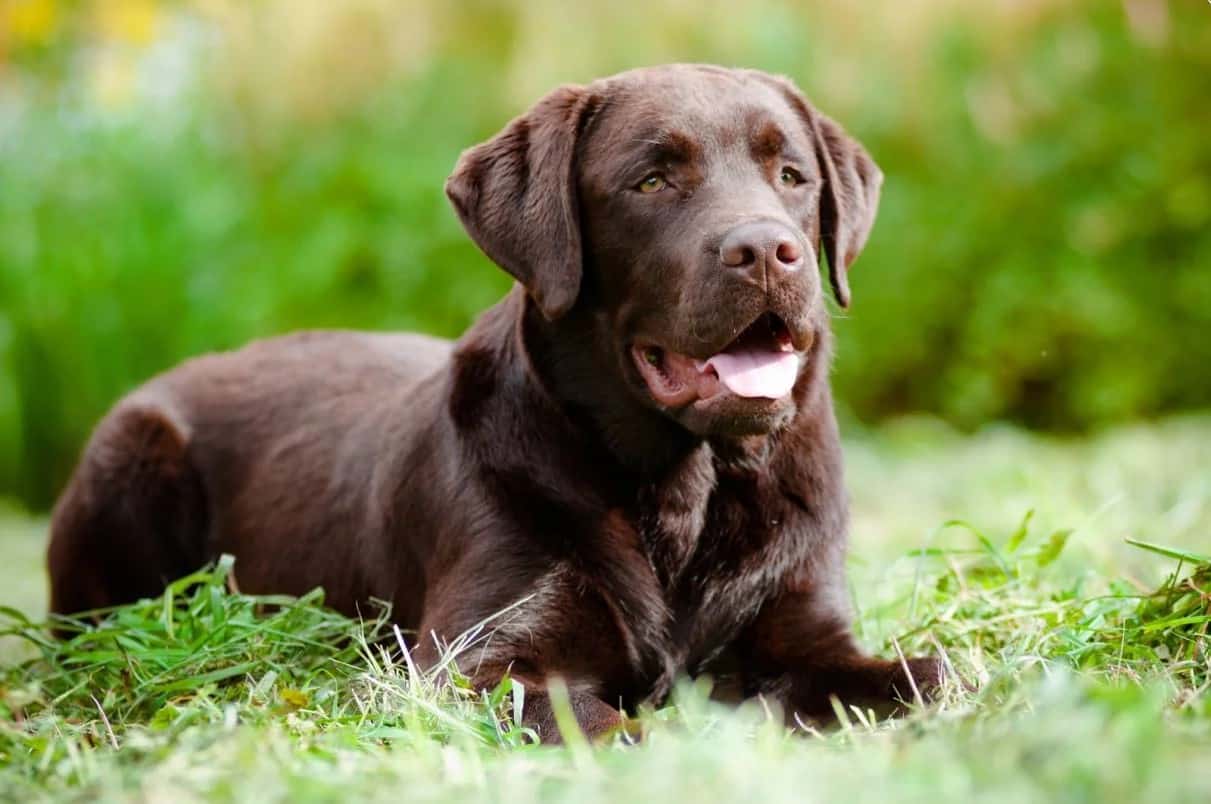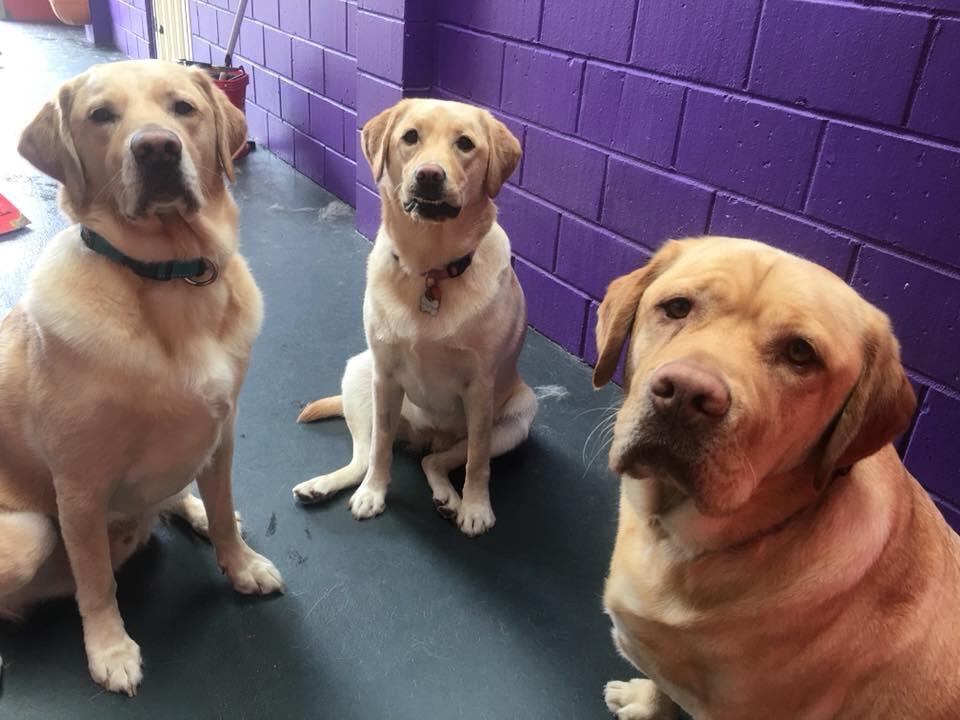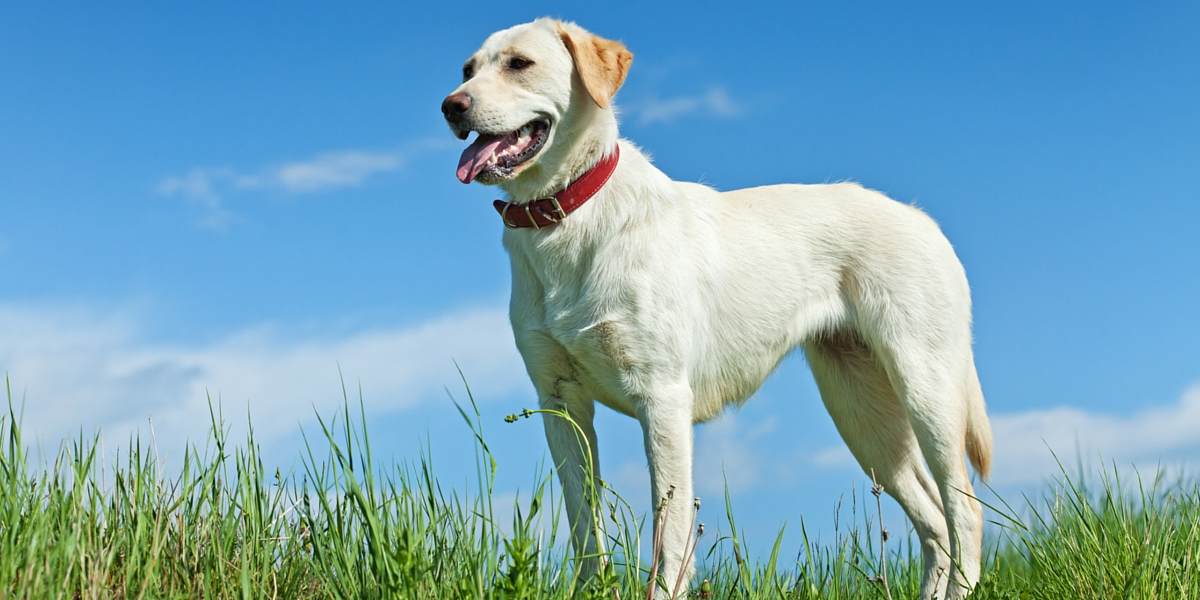Hair is the most admired as well most troublesome area for Labradors. Their owners would complain about How Can They Stop Their Lab from Shedding? because they are fed up of cleaning the hair lying all around.
I had to address it in this article with the help of the information I gained from groomers here in Idaho, USA.
Can you stop Lab from shedding? No, you can’t stop the shedding. However, it can be slowed down with proper care. Food has the most visible effect on all living beings. This means that don’t settle for just any food for your Lab.
The next is to use good shampoos and hair care products and also keep brushing your Lab so that hair doesn’t spread everywhere.
Labs are so popular. The only thing stopping them from becoming a family and hunting job in every home is their shedding. They look good and come in various colors.
If you are like me then you would want to know if there is any solution to any extent available for controlling the shedding of Labradors. I have researched it thoroughly and presenting to you my findings here.
Reasons Why Labrador Dogs Shed So Much Hair
Labs shed so much hair (more so than other short-haired breeds) because they have what is referred to as a “double coat”. This coat of fur is great at keeping your labs warm in the winter and able to withstand the rainfall and weather much easier than other breeds.
This is due to the fact that this coat is comprised of a waterproof outer layer of fur, and a fluffy undercoat to keep them warm; similar to a fur coat that we would buy as humans.
In some cases, any dog that is in more of a temperature-controlled environment, such as dogs that are only outside for walks and to use to the bathroom, will shed more; this is due to the fact that their instincts are basically missing the signal from mother nature to either shed their winter coat for a thinner summer coat or vise Versa.
While the amount of fur that a Labrador sheds will vary from dog to dog, it is a common fact that Labs do shed more than other breeds. While it can be argued that yellow labs shed more than black and chocolate labs, this could simply be because the white fur would be more likely to show up on your furniture.
It should also be noted that any dogs that live in a warmer climate will shed more than those in colder regions, as their body realizes that they do not need all of the furs that it is producing.
Other factors can attribute to your Lab shedding more, such as allergies, quality of food, and skin health. For instance, a dog that is having an allergic reaction to a component of their food, or their surroundings, will tend to shed more as their skin will be irritated which leads to more scratching.
Speaking of skin health, another factor can be the quality of shampoo and conditioner that you are using when bathing them. Similar to us humans, a healthy scalp (or overall skin for dogs) will lead to healthier and stronger hair.
It is also important to take into account that dogs have a delicate PH balance, and if that is off their skin will not be as healthy as it should be, which can also lead to excessive shedding.
Do Labs Have a Shedding Season?
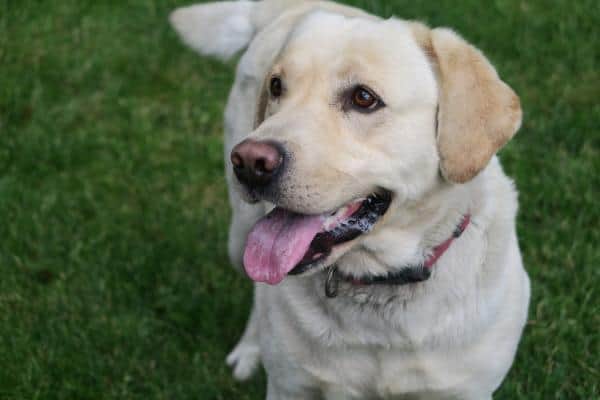
Yes. In fact, Labs are among one of the few breeds of dog to have two shedding seasons per year; this is common for any breed of canine that has a double coat. These seasons occur depending on the weather in the region that your Lab is located in.
These “molts” occur during which their coat thickness is in need of a change to deal with the weather outside, usually during spring and before winter. The reason for shedding during these times can be attributed to the weather warming up in spring, and your Lab will shed their thick winter coat for a thinner one.
The reverse happens before winter; your Lab will shed their summer coat for a thicker winter one.
However, it should be noted that any dog that is an indoor dog, or in a temperature-controlled environment, they will not receive the instinctive signals of when to shed their coat, and may shed all year long.
The region in which you are living can also have an impact on how often, or when your dog is shedding their winter or summer coat.
If your Lab has acclimated to a primarily warm environment, such as southern regions, then they may not grow a thick winter coat at all. The same can be said for if your dog in a colder, northern region that does not have a warm season; if this is the case, they may not shed their thick winter coat for a spring or summer one.
Labrador Grooming Expert Tips for Shedding
In order to minimize shedding, it is recommended that you brush your dog regularly. This is especially true for labs due to their double coat of fur. For this reason, there is a particular brush that is especially useful for dogs with a double coat, as it can get to the undercoat as well.
Brushing will allow the brush to collect the dead hair from your dog before it collects on your furniture, clothes, and carpet.
This is especially true during the shedding season when it is warmer outside; during the rest of the year, or the off-season, you can cut back from once a day to a couple or a few times a week.
This part is your discretion, and if you notice they are shedding more, just brush them more often.
While a normal, simple dog brush should do the trick, some people have found luck with some of the more expensive brushes that will barely cut the undercoat just enough to remove some of the dead furs before it falls out.
There are different types of brushes available that you can use to groom your Lab, and all have pros and cons associated with them.
Ultimately, what it boils down to is what you find works best for your dog. For instance, some Labs may have naturally more sensitive skin. If this is the case, you should try to stay away from wire brushes without a rubber tip.
While some dogs have thicker skin and can handle these types of brushes, this is not the case for all.
There is also a brush available for use that is called an “undercoat brush“. This is especially good for dogs such as Labradors that have double coats, as it not only removes the dead fur from the topcoat but goes underneath and loosens up the undercoat as well.
These brushes used in combination with each other will help in removing all of the loose furs before it has a chance to land on your furniture or clothes.
Another good way grooming tip for a shedding lab is to try to really get in deep when you are bathing them and try to massage as much as you can to encourage the fur to come loose. This will not only make it runoff during the bath but will also loosen it up for the post-bath brushing.
Trimming behind their back legs will also help to keep the shedding down, but if you decide to trim any of the furs on the body you should take special precautions not to get to close to the skin, as this could leave them more vulnerable to sunburn.
Can Shedding Slow Down? And How?
Although like with most dogs, you cannot keep a Lab from shedding, you can slow down how much they are shedding. Keep in mind that as stated above, any dog will shed more depending on the time of year; and dogs will continue to shed constantly if they are in a temperature-controlled environment.
There are however ways that you can slow down the shedding process in your dog, and keep from finding clumps of dog fur all over your house on clothes on a daily.
Keeping a well-balanced diet for your Lab will make sure that their coat stays healthy and strong. Similar to human hair, healthy dog fur will be less prone to breaking and thus will result in less amount of it falling off.
This not only will keep your dog from shedding, but will add to their overall quality of life, and will help their teeth and gums as well.
When giving your Lab their weekly bath, it is recommended to use both a de-shedding shampoo and a de-shedding conditioner. This will help especially during the shedding seasons.
Don’t worry, there are not any harmful chemicals or additives in these products, they simply work with your dog’s PH to regulate it, ensuring that they are not shedding ridiculous amounts during the shedding seasons. (More on this below) And as always, remember to brush your dog regularly.
#1 Regular Bathing and Good Quality Shampoo
Frequently bathing your dog will do wonders to cut down on excessive shedding. This will help to loosen up all of the loose hair that is a day or two away from ending up on your furniture or clothes.
The best practice is to not only give your dog a weekly bath but to also brush your dog right before as well as after (during the drying period).
The method by which you are drying your dog’s hair will also have an impact on the quality of fur. Much like humans, any type of hair is prone to damage and you will not want to simply dry off their fur as quickly as you can (much like you wouldn’t for your own hair).
The best way to dry their fur after a bath is to use a blow dryer on low heat while you brush their coat. This not only keeps them from getting agitated and growing to hate bath time, but will also avoid heat to dry their hair, and remove any loose fur in the process.
Brushing your dog out prior to their bath will help to loosen up all of the loose furs that may be stuck in their coat, and will encourage it to fall out during the bath.
Brushing after, while their coat is still a little wet, will also help to get rid of what dead fur may be left. They will appreciate the extra attention after the torture of a bath, as well.

As far as the shampoo and conditioner that you decide to use when giving your dog a bath, it is important to remember that there is a reason why these products exist, and why we don’t simply use human shampoo for our faithful pooches.
This is because they have a different chemical composition or PH; the shampoo we use for ourselves will end up drying out their fur, which can lead to more shedding. Picking a high-quality shampoo and conditioner that promotes healthy skin and coat will do wonders to cut down on the amount of shedding.
#2 Keep Stress at Bay
Just like humans, stress can have a huge impact on a dog; from their behavior down to their PH levels. If your dog has been acting more neurotic than usual, or if you have noticed excessive shedding, it may be a good idea to address their stress levels. Below are the top 5 ways to keep your dog’s stress levels down:
- Make sure your dog is getting plenty of exercise. Any type of exercise that you can think of to easily do in your current living situation will not only help to keep their stress down, but will also help them to bond with you, and live a happier, healthier life.
- Just like humans, dogs need affection and to know that they are loved in a safe environment; this is especially true for Labs. One of the best methods I have found to accomplish this is to have them snuggle with you either on the floor or on the couch. Although it would be much easier to do this if their shedding is under control.
- Reducing your stress levels can also help, as dogs are very perceptive and can pick up on our moods and stress. This is one reason they make such amazing companions, but you can also affect their stress without meaning to. If you notice you have been more stressed at work or in your work, take some time each day to perform some slow breathing exercises.
- Mental exercise is just as important as physical exercise and will help to lower your Lab’s stress levels. Having something that they can use their mind on (such as a toy with a treat that they must get to receive) will help to accomplish this. Another great way to engage their minds is to hide a treat in one of your hands, close your palms face-down, and have your dog try to guess which one has the treat.
- Many dogs have been shown to enjoy security blankets, pillows, or familiar objects. If this sounds like your dog, make sure that they have access to one of their favorite objects whenever possible during their stressful time.
#3 Food Matters a Lot
Your dog’s diet can play a key role in how much they are shedding, and upgrading their food to a more expensive one with higher quality ingredients can be a huge help in the fight to lessen their shedding. Your dog could even be shedding excessively due to an allergy to an ingredient in their current dog food.
Choosing a dog food with high-quality ingredients can not only help to maintain a healthy coat of fur for your dog (which will cut down on shedding) but is also good for their overall health.
Although it may seem like a good idea to give your dog foods that are high in good healthy fats such as coconut oil, this is not the case and should be avoided.
Much like their system has a different chemical composition and PH balance than ours so does their stomach. And it is important to remember that what they eat has a direct correlation to how healthy overall they are.
When choosing dog food, you will want to stay away from any type of starches or ingredients that would be considered to be ‘filler’. Although ingredients such as rice may sound great, these types of ingredients can actually be bad for your dog, and removing them from their diet can help to maintain their overall health.
Watching your dog’s diet includes what you are feeding them, as well. No more letting them lick that plate of pasta clean! Any type of starch should be avoided.
If there is any type of food that is questionable to you, the best practice is to simply not give it to them. non-fatty meats and some products are alright but in minimum quantities.
Excessive scratching from your dog is a classic tell-tale sign that they are allergic to something, and if there have been no major changes in their surroundings this allergic reaction can be due to the food that they are receiving; either from people the food they are receiving or from the daily dog food that is provided to them.
A well-balanced diet for dogs should include grain-free ingredients such as chicken and fish. Fish is always a safe bet to feed your dog, as it contains skin-healthy vitamins such as omega 3,6, and 9.
There are dog food brands on the market now that are specifically designed to both reduce shedding and promote healthy coat and skin.
Protecting Your Furniture from Lab Dog Hair
Although there are ways to reduce the amount of fur that your dog sheds, and to promote healthy skin and coat to reduce shedding, finding dog hair on your furniture and clothes comes with the territory of being a dog owner.
That said, there are steps you can implement in order to reduce the amount of dog hair that is found around your home.
Have a place designated for your dog
this will help with behavioral training as well as setting boundaries for your dog as relates to where they are allowed to nestle in, and where it is discouraged to do so. In some cases, dogs are content as long as they can see their owners; and this is why they tend to lay next to you on the couch or sofa with their heads nestled in your lap.
If this sounds like your dog, then a good comfortable dog bed placed on the floor in a location that they can keep an eye on you may be all they need in order to stay off your furniture; unless of course, you invite them to join you.
Use a blanket or sheet to cover your furniture
this is a great way to keep your house looking chic while at the same time making cleanup a breeze as you can just toss the blanket or sheet into the washer when needed.
This will also set boundaries of where on the couch, sofa, or chair your dog is allowed to cuddle up on and where they should not.
Add a deep clean of your furniture
This does not have to be drastic or involve harsh cleaners, but can be as simple as taking a vacuum hose to your couch, sofa, or chair. This will keep the fur from building up and will intern keep you from becoming frustrated or overwhelmed with the amount of dog fur.
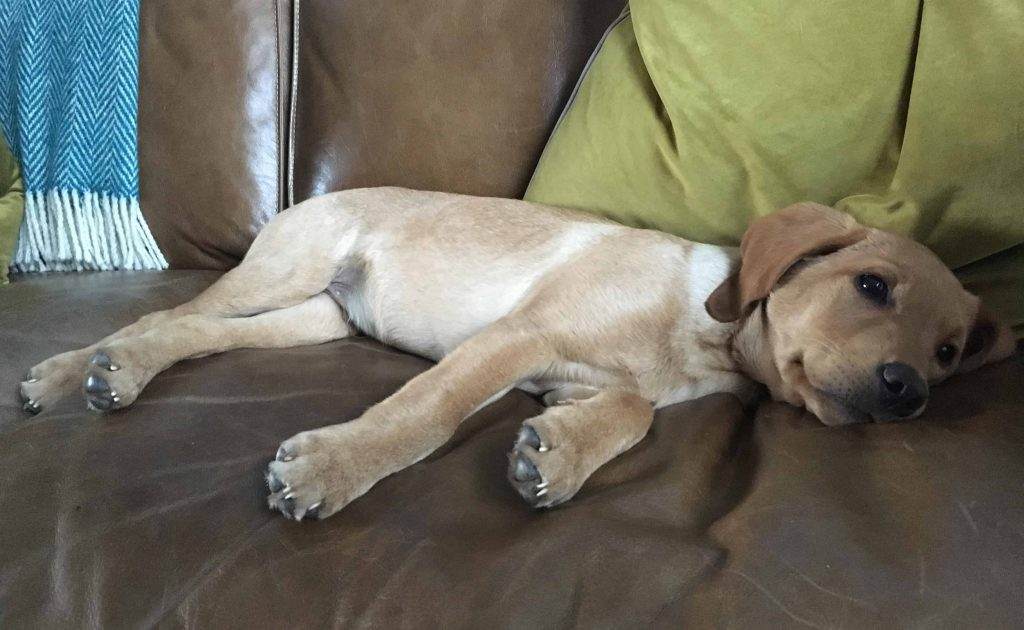
A Retriever is a Retriever, Do Golden Retrievers Shed More than Labrador Retrievers?
Both Golden Retrievers and Labrador Retrievers are excellent choices for a dog to add to the family, and are very popular among many families. They are similar in the sense that they have a double coat, are highly intelligent, have high energy levels, and are some of the most loveable creatures on the planet.
Unfortunately, both breeds are known to be excessive shedders, as well. Both breeds are notorious shedders, and this can be attributed to both breeds having a double coat. Like Labs and Labrador Retrievers, Golden Retrievers also have two moults or shedding seasons per year.
The major difference between the two breeds as relates to their fur is that Labs are short-haired breeds, while the fur coat on Retrievers tends to be longer.
Both breeds require weekly grooming routines, such as regular bathing and brushing; in some cases, and undercoat rake will be necessary as well.
While both breeds do shed frequently, it is recognized that due to their long coat, there is more chance for breakage and split ends, and as such Golden Retrievers do shed a little bit more than Labrador Retrievers.
Conclusion on Labrador Shedding Solutions
Both Golden and Labrador would shed equally so a retriever in your life means no respite from shedding. As a US citizen, I have always owned at least one retriever because they are so popular in the USA. Other breeds are an option and they have their own qualities too.
With time, you can expect to get used to the shedding. As discussed above, you can take measures to stop shedding. Cleaning the hair is ok as vacuum cleaners are easily available these days. I am more concerned about expensive furniture and other hygiene issues like fur getting into open food.
Another aspect to shedding is how the whole family takes it. If you have a joint family then you are going to hear a lot of complaints. The same applies to rented properties. The solution to this is to take responsibility and avoid hair getting on items of concern.
Other people don’t have a problem with dog shedding hair but are concerned about cleanliness and hygiene.
There are some things that we can do to limit the amount of Labrador shedding that will help those that do mind.
Hope this article has given you information about handling shedding issues with Lab dogs. I also hope that you would use these tips in your daily life.
References
- https://books.google.com/books?hl=en&lr=&id=n5WmCQAAQBAJ&oi=fnd&pg=PT2&dq=Stop+a+Labrador+From+Shedding&ots=DxHtWI_W_L&sig=fxtVFcBT9-Esef0yi7bFgBeAxb4
- https://books.google.com/books?hl=en&lr=&id=CwZ_s_ylN_EC&oi=fnd&pg=PP1&dq=Stop+a+Labrador+From+Shedding&ots=5-NIgMJgdJ&sig=uf1-Wr9tVZ0tubnMGopGN3B_7JA
Table of Contents
